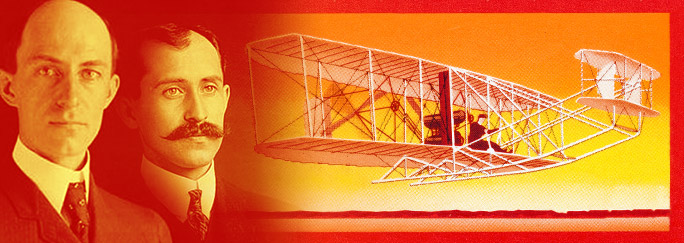-
![LANG-CODE-KEY]() LANG_NAME_KEY
LANG_NAME_KEY

Pilots,
The date 17 December 1903 is a memorable one, as it was the day when human beings first achieved flight on an engine-powered aircraft. This amazing feat was accomplished by Orville and Wilbur Wright, two American engineers, who have since become commonly known as the founding fathers of aviation. Even though, technically, they weren’t the first to experiment with the miracle of flight – others had preceded them with different daring constructions in the years prior – their efforts certainly marked a breakthrough for the entire field, granting the two brothers an eternal spot in the aviation Hall of Fame. Today, on the 111th birthday of this historic event, we pay tribute to these ‘Pioneers of the Sky’ with a dedicated special that celebrates their memory.
‘Pioneers of the Sky’ Special | ||
|---|---|---|
|
All offers and missions will be available |
||
Triple XP for the first victory of the day on every plane
What better way to celebrate the miracle of flight than with extra XP for all your first victories?
The Wright brothers gained a lot of experience during their initial flight trials. Do the same in-game this weekend and your pilots will gain bonus experience too!
|
Mission 1: Fly Forrest, Fly! | |
|---|---|
|
Goal |
Become one of the top 5 experience earners on your team. |
|
Reward |
Triple Crew XP for the battle |
|
Conditions |
Only base XP counts (bonuses for the first victory, premium account, etc., will not be counted to determine the rankings). |
In order to properly honour the achievements of the Wright brothers, we’re also adding another mission from Monday 22 December at 07:00 until Wednesday 31 December at 06:30 CET (UTC+1) that will further help you to boost your crews’ progress!
|
Mission 2: Train for Superiority | |
|---|---|
|
Goal |
Earn at least 15 superiority points in one battle. |
|
Reward |
Double Crew XP for the battle |
|
Conditions |
The mission is only available in Standard Battles. |
The first ever powered fixed-wing aircraft flight is credited to the Wright Brothers and took place on 17 December 1903. It was the result of a long process of development by Wilbur and Orville Wright, who started out running a bicycle sales and repair shop in Ohio. Their interest in flight was a hobby, and it began by studying the properties of box kites. The first breakthrough came with the discovery of a process called wing-warping. The meant twisting the wings in order to bank left or right, resulting in a controlled turn.
The brothers started experimenting with gliders in 1900. The earliest gliders were more like large box kites than planes – there was no fuselage or tail, just the wing arrangement and a caddy for a pilot or ballast load. The experimental gliders performed poorly, leading the Wright Brothers to challenge the accuracy of the current data and equations on aeronautical lift, and conduct their own research by building their own wind tunnel in their bicycle shop.
“The desire to fly is an idea handed down to us by our ancestors who looked enviously on the birds soaring freely through space on the infinite highway of the air.”
- Wilbur Wright

Over the next couple of years, the glider designs were improved based on the continual test results. A wing rudder was added and the wings became longer and narrower. It was at this time that the principle of ‘Three-Axis Control’ developed – in which roll (to turn by rolling), pitch (up and down) and yaw (turn using the rudder) were all independently controlled. Three-axis control is still the basic control mechanism used to date.
In 1903, the Wright Brothers were ready to add power to the mix. Their first powered plane, the Wright Flyer I was built from spruce wood and muslin cloth. The propellers were hand-carved from wood, and a purpose-built gasoline engine made from aluminium provided the power.
The date of the flight ended up being heavily delayed due to problems with broken propeller shafts during tests. The first proper flight attempt was made on 14 December with Wilbur piloting. However, the plane stalled after take-off, causing a crash and damage.
After repairs had been made, the next attempt took place on 17 December 1903 at 10:35 am. Orville was the pilot, and this time the flight was successful. The plane flew 120 feet (37 m) in 12 seconds at a height of 10 feet (3 m) above the ground. The moment of flight was captured in a famous photograph.
The first flight lasted only 12 seconds at a speed of 10km/h and covered a distance of 37 metres.

At the time, both local and international journalists didn’t pay much attention to the event. It was only a few years later that the Wright Brothers’ achievements was recognised. Global innovation soon followed, with designers across the world building upon the basic principles of the Wright Flyer. Within the space of just ten years, plane technology had evolved from the very basic flyer into the biplane era.
Wilbur Wright died of sickness in May 1912, just a few years after the above photograph was taken. Orville lived to see the vast role played by aircraft in World War II. He died in 1948.
How about a victory roll on your favourite plane to honour the Wright-brothers, pilots?